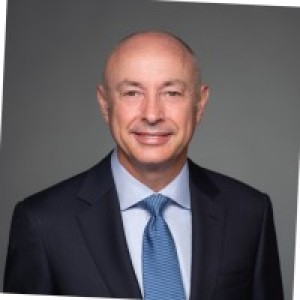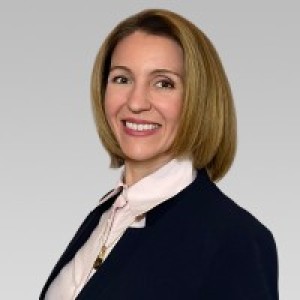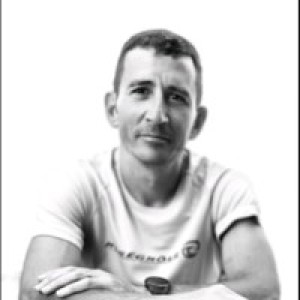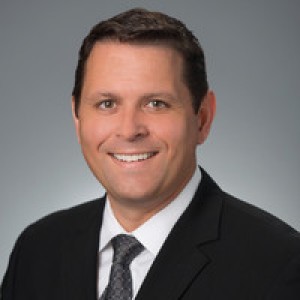ASCs: The Next Frontier of Robotics and Digital Medicine | LSI USA '24
Addie Harris 0:04
We can we can get started. I thought we'd do some quick intros. First, we'll go down the line. I can start with myself. I'm Addy Harris. I'm the CEO of Haventure. I'm also on the board or advise several companies and the robotics, medical technology, medical device space. I've got a long history in the space. Prior to being at Haventure, I was at j&j, I built and developed out the team that launched the velis orthopedic robotic solution. Prior to that, I'd started a company called cardiac robotics, which was sold to Stryker. And then various companies in and outside of the medical device space, going back the rest of my career. So happy to be here today really excited about this topic. And I'll pass it on to Stuart.
Stuart Simpson 0:52
Good afternoon, Stuart Simpson. I am CEO of THINK Surgical, which is an orthopedic robotics company. Prior to that, I had a very long career at Stryker, where I was involved in the acquisition of Mako back in 2013, and ran the joint replacement and robotics business they are through until the end of 2019.
Christopher Campbell 1:16
Awesome, good afternoon, Christopher Campbell. I currently work at j&j focused on platform strategy and Digital Business and Business Innovation. With a focus in the orthopedic segment. I have a background of engineering. I've owned the company outside of medical and then worked inside of a Swiss company. And they came into j&j. I'm outside my j&j work, I partner with a lot of startups as well and see the industry grow. Glad to be on the panel.
Clement Vidal 1:38
Good afternoon. I'm Clement Vidal. I'm from an essential robotics from France. We do robotics platform for bone surgery, orthopedic surgery, and we developed a platform which aims to be implant agnostic. Prior to that, well, I have an engineering background. I've been in the surgical robotic fields for almost forever in soft soft tissue surgery and wound surgery. And actually, just a little bit of myself, my, my father was an eye surgeon. And when I was a child, I saw the emergence and the growth of packet modification and the folding the folding implants and everything. And that was super exciting as a child. And now I'm part of the surgical robotics revolution. I think that's super exciting as well.
Christopher Prentice 2:25
I'm Chris Prentice. I'm with LEM Surgical out of Switzerland and we're an orthopedic spine robotic system. My background pedigree is prior to lamb I was the CEO of Harmonic Bionics prior to that CEO of Mazar robotics, prior to that Intuitive Surgical and then started my career with j&j. So I've been 24 years, mostly in robotics.
Addie Harris 2:51
Well, fantastic. I mean, I think you can see and hear from this panel, we've got just an absolute depth and breadth of experience. And so it should be really exciting today. So for companies big and small, I think we're seeing the the ASD market kind of depends where you are in the world with what it's called. But the outpatient surgery market, the days patient surgery market is rapidly growing. It's a market that has existed for several decades. It's interesting because I had a slide I made close to 12 years ago that I looked at recently. And and I'm like, it's just that the numbers are bigger. It's the same message. But I think what we're seeing, especially with robotic surgery is robotic surgery has really taken off, it's here to stay. And we're now seeing Okay, robots are commonplace in the O RS and your big hospitals. But as this this market of smaller hospitals have more efficient centers grow, how do robotics fit into that space? And, and hopefully, we're gonna get some, some good answers and some robust discussion here today. So to start it out, actually, Stuart, I want to go to a little bit of what you discuss today in your presentation on things surgical, I loved your slide that showed the sneakers because I got to think how many sneakers I have in my closet and how I can justify those to my husband now. But, uh, but I think a great question is, you know, you pointed out that things surgical is a robotics company, not an implant company and how important is it for robotic systems to really be to be specialized in how to think approach that that ASC market and that way
Stuart Simpson 4:35
Yeah. So I think since real since robots came into orthopedic surgery or into joint replacement, the customer and when it makes a customer I mean, the physician start there has been presented with a trade off decision. They either have to choose the right robot that they believe is best or the right implant that they believe is best. because they're all closed systems, each robot only operates with the implant from that particular manufacturer. And our view is that you shouldn't have to make those trade off decisions that you should be able to independently choose the right technology, and the right implant for all your patients are even the right implant for each individual patient. And as the procedures move into the outpatient setting, I think that that becomes even more true because outpatient surgery centers are typically owned by a consortium of physicians who have all got a small interest. And none of them have the same preference for implants. So technology that allows them all to do their own thing makes sense from an economic perspective and a clinical perspective as far as I'm concerned.
Addie Harris 5:51
Yeah, thank you. Any other follow on comments to that? No. Okay. So Chris, question for you. You're you're currently at one of the big A's and one of the greats. What do you think, are one or two of the most important factors for a med tech company, whether they're, they're big, or whether they're small? And maybe you're looking to acquire a partner to win in the ASC in the next five years? Yeah, everyone cozy up to Chris here.
Christopher Campbell 6:20
Yeah. So the question, basically, you know, what's going to help them win in the market? Yeah, yeah, I think I mean, ASCs, maybe we'll get to a bit or not all ASCs are the same, right, we seen, I would say, from when ASC started an evolution of the structure of ASCs. And many of us have been in industry have seen this evolution. But it does change how we talk about ASC as you have if physicians owned independently owned ASCs. And you have outpatient centers that typically owned by hospital. So how you tackle those, I think, differ. But in principle, I think two things are important thing. One is ASCs are efficient financial institutions aimed at bringing patients in giving them excellent service, but sending them out the door in the same data to the principal. So I think to win a partnership with a finance side, and an ASC is really important. Yes, you need clinical efficacy, for sure. But making sure you meet the demand of the finance side is really important. And then I also think, especially in digital, digital, it's fast, and it's dynamic. And so design, agility is really important in the solutions, because I think the market will continue to evolve, and we have to evolve with the market.
Addie Harris 7:32
Fantastic. A question for you. Clemont. How would you say the surgical robotics industry essential, in particular, has, has approached this ASC market? And how are how are you seeing the company and the technology need to evolve?
Clement Vidal 7:51
Well, I THINK Surgical robotics and I think we'll all agree, is or will become a standard of care. I'm talking about bone surgery, orthopedics it's already the case for sub sub sub surgery with with DaVinci in many different application and and the trend is there for for for orthopedics as well definitely. Nevertheless, well, I'm more an expert of surgical robotics and ACS. And, as Chris mentioned, there are a lot of different types of ACS but still, I see some challenges right now in the adoption of surgical robotics and surgical robots in LCS. First of all, the ASC will not be specific to one one indication robots are most of the time a specific to one indication that you only knee or that you only your spine or whatever. And whereas ASC is if we would do I don't know like shoulder and sports medicine and some may do you know, IPS and knees and some of the spine or whatever. And, and and they cannot afford to have a single robot for each of us indication. Also, I guess it's two or three points the right now most of the solutions are dedicated to an implant like specific to an implant manufacturer and whereas the surgeons they you know in even in a see even the smaller is it may come from you know, different trainings using different implants you may want to choose as well to Stuart's points and again as he's a cannot afford like a Roberts a for surgeon age for implant a and then Robert D for St. John D for implant D right. So, what our view on that is, we are essentially we want to develop a platform and surgical platform that will host many apps for multiple implants but also several surgical indication across orthopedics. And it is a very ambitious, that's a big one.
Clement Vidal 9:49
Yeah, definitely. So to do so, we are developing a truly open model. And by open I mean, you know, the traditional we develop on behalf of we support the development of our implants partner, you know, up specific to their implants, by the way, saving them, you know, the cost and the burden of robotic development program. But we go beyond that. And what we want to do is, and what we are doing actually is offering a development kit and environment, including tools framework, technical regulatory, for search party, to develop their own application dedicated to a surgical indication, to be hosted and to be used on our platform. Okay. And we provide all the tools for that, and to, and I think that for us, is the only way to, you know, foster that ecosystem and to reach our goal of truly cross application surgical platform, that is not a bad x, right. And when we get there, I think we will, really supports transition towards a CS, but also will really support healthcare providers, and ultimately, patients.
Addie Harris 11:01
Yeah, thank you so much. Coming to you, Chris. And I think really nicely leading into that. So all robots are not created equal equal. And I think we're hearing about, you know, two different variations of open robotic systems. But how would you comment on ASCs? Are all ASCs created equal? Like we say the term but you know, what does it really mean, you know, in the US and also worldwide?
Christopher Prentice 11:23
Yeah. So, Chris mentioned that, no, they're not created equal. Now they have the same mission is trying to do procedures in an outpatient basis. But when you you really got to deconstruct the ASC? Because you can't say I just have an ASC strategy? Well, is it HCA, they own a whole lot of SES, and they're also a hospital company, you better be careful how you deal with one arm, the other they're going to talk, you can't have a lower price strategy and one for the same equipment as as a hospital. So you have to be careful, their tenant is the same. Additionally, we've mentioned their specialization and ASCs. There's a lot that are very specialized. And you know, if surgery, there's orthopedic Of course. So those are, you know, it take a look at each one, whatever your equipment has going forward. What kind of governance and management is involved? Is it truly owned by a larger entity like an HCA or tenant? Or is it managed by one of the very large management companies that has 1000 ASCs under them? So while that ASC may be independent, the management is not necessarily they have massive scale on, you know, 1000 case level. So, you know, I would, I would caution anybody, when we look at ASCs as a strategy, I don't say here's our ASC strategy. It's like, that's kind of like saying, I have a hospital strategy. And not saying that there's a rural clinic, rural critical access hospital versus an academic center that has a level one trauma, you're going to have to take a look at that. Some ASCs will want to go that natural, historical of they don't want to own anything. They want to minimize what they own. It's clean room and go. Others are buying. And so that's what you have to look at. I just saw a recent story. I think it's Tallahassee orthopedic, just built a whole new ASC center. And in their announcement and building the center, they bought a Zimmer Rosa, they bought a Mako and they bought a Oh, arm and Estelle station, and
Addie Harris 13:17
over here stewards, cringy. And I mean, just think of the size of the storage closet, you need.
Christopher Prentice 13:21
That might be not every year seems like that right to think, right? There are some that are almost like hospitals, when they had that mass and scale. They have those large orthopedic practices with 40 5060 surgeons behind it, they can pull their money and they can buy equipment,
Addie Harris 13:38
right. So that nicely leads into an area I'm passionate about. And I'm going to ask Stuart, your question on, which is business models? How does how does your business model change? I mean, not all as ASCs are the same. I think whether you're approaching the ASC or a large hospital system, you know, the business model is something really important. And I think what we're seeing is the business model of the really big company, as if we give you a piece of equipment, quote, unquote, for free, and exchange, you have to buy our implants, you know, for a long time. You know, that is being challenged more and more. So how is how is think approaching that and what are your views on, on where there's business model innovation in this space?
Stuart Simpson 14:23
Yeah, I have to take some accountability here.
Addie Harris 14:27
You're the original creator.
Stuart Simpson 14:30
To those authorities. 13 When Stryker acquired Mako, the first thing we did was make it a closed system. We'd spent $1.65 billion and wanted to recover that investment through market share. And the only way to do that was to use the device to leverage implant market share. And you got to know that that's where the money is for these big companies because implants are 80% gross margin of profit. smartly, they are very, very lucrative businesses. But as we saw, which is okay, when you're a first mover and that first mover advantage paid off, Stryker picked up 10 points of new market share in the US. But when the other companies come along, and they're offering the exact same thing, my robot in return for implant volume, it doesn't work anymore, and the customers becoming fatigued, doesn't matter whether they're ASC customers or hospital customers, they're becoming fatigued by that, they realize that there's no such thing as a free robot, a free robot, as long as you buy $5 million worth of implants for the next five years. And by the way, the price is fixed, is not a free robot. So we're increasingly finding the customers are looking to us to try and shake things up a little bit, and offer an implant agnostic platform. And you know, what they are willing to pay for a robot that is implant agnostic, because they recognize the value in being able to satisfy multiple different physician preferences with one piece of equipment, and the healthy dynamics in terms of competition and innovation, that that stimulates amongst the implant companies competing for that business. So they see it as an economic win. And they see it as physician preference when. So I think the future is going to be back to paying for your robot and expecting it to do exactly what you bought it to do, and buying your consumable separately.
Christopher Campbell 16:39
Can I can I Oh, yeah, go for it. So. So I agree, I think in terms of the desire to have the system being able to do multiple pathology procedures, be able to leverage in multiple way, I think that that theme is going to be consistent on the financial side, I do think diversifying revenue beyond just capital and disposable is another thing as we think about robotics and digital surgery, too. I think the rise of software, you mentioned, you know, software apps, I think that's increasing part of the med tech community of digital transformation in robotics is how can we leverage software that a lot of other analogies industries, we can look towards, where software revenue become the dominant player in the market, especially with the rise of deep learning? And of course, we'll mention AI but there's lots of behind what AI is. Come
Addie Harris 17:27
on, I was gonna ask you an AI question.
Christopher Campbell 17:32
All that said, I think we also need to expand our view of revenue opportunities, services really important. ASCs are running very tight ship. So there are opportunities in the market to offer targeted, new offerings generate new revenue that really supports the service
Addie Harris 17:47
training. Yeah, yeah. I'm actually going to hop back to Chris, I'm gonna ask a question. Given your background at intuitive, and also some of these big companies, typically robotic devices, or capital devices are depreciated over five years. So what happens after five years? Is that? Is that an opportunity for new technology to come in? And, you know, what happens to these is these devices, is there an opportunity, potentially, for? What are other Chris here mentioned in terms of in terms of additional software service training to be done on those older devices? Yeah,
Christopher Prentice 18:24
there's definitely a potential you have, we'll see what happens in the coming two years here with DaVinci launch. Because they're exci is still a viable entity. They've said they're gonna keep it going. We'll see if they put the seven year letter of obsolescence in, you know, but that's still seven years, right? So you know, if you're a hospital system, and you want to upgrade to the new one, the five and then what do you do with all the other excise? Well, if they're already depreciated? Could you roll them over to your ASC? Maybe, maybe not, you have to look at the economics of it. Because it's not just the acquisition of the equipment itself, you have to look at at a per case basis, what's the actual instrument cost, per, per case,
Addie Harris 19:03
what's continued service on this device and
Christopher Prentice 19:05
so forth. But with the acuity of the cases that go into an ASC, especially in the Special General Surgery, there's lesser, so you can't apply that classic? Well, their average instrument cost is 1400 to 2000. Well, not necessarily for lab colleagues. It's like 700 that might fit so it's going to be on a case by case instance. So a facility that has a fleet of robots and they're able to upgrade to the others they may, you know, apply them like an HCA to their their essays, you don't know right?
Addie Harris 19:38
They may decide you know, some of our depreciate equipments gonna go over into this center that maybe isn't generating enough revenue to justify new equipment. Okay, really interesting. And then come on coming back to you. I would say another buzzword or hot piece of technology, we're often hearing about augmented reality, virtual reality mixed reality. How does that compare to robots? Do they play nice together? Is is a RM AR VR? Is it going to replace robotics? How do you see those two fitting together? Or not?
Clement Vidal 20:15
Well, definitely some, I think some opportunities for you know, AR VR, VR, I guess especially, you know, in SES. Nevertheless, I strongly believe in robots, I believe in the, in the surgical robotics revolution I mentioned. And, and I think, I think robots will, as I mentioned, or will become the standard of care, how can we be better, and there are several reasons for that. The first of all, robots are more precise than navigation. It's been widely proven in for spine surgery, and demonstrated and, and you know, AR or VR at the end of the day is the on the vacation, right? It sends innovation, but then the navigation. And, unfortunately, a surgeon, you know, when he or she invest in the technology, it's not only money, it's on the it's also, you know, time it's training, it's it's logistics, it's changing the habits and everything, it's a personal investment, and I believe they will want to go for the best for the best technology available. And I believe it's robotics. Robotics can be also very versatile. As, as I mentioned, I mean, a robot arm can carry a burr. So a guide, and so opened up its platform level, basically. And as we discuss, it's, it's, I believe, what what is will we need eventually. Now there is a challenge with with economics, obviously. And I agree with, with, with George, the business model that we have to evolve. I can't agree more than then I think the volume discount model as their own limits, even if they are attractive, we know. So they eliminate the ability to negotiate in the long run. But we need to find some, some good and cost effective business model for smaller centers as well. Probably reducing capex as we as we discussed, but maybe not only, and maybe we haven't found them yet, but I think that there is room for this. Yeah. And at the end of the day, maybe last thing is that I believe, and even most importantly, is of patients, they want robots, they want surgical robots. Not only not too bad, because I mean, surgery, we know that Intuitive Surgical, has done a terrific job over the last 20 years in demonstrating the effectiveness and the benefits of surgical robots. And and now the patient, they want the best for themself, and they want robots and I think the write about it. Can
Addie Harris 22:47
I say, Stuart? Do you have a comment here? Yeah, I
Stuart Simpson 22:49
think as innovators, strategics or investors, there's a couple of fundamental questions that you need to ask yourself. enabling technology of some kind is part of surgeries future absolutely is. And I don't think the label robotics or technology be necessarily is specific enough. There is a tendency in orthopedics at least, to have a device and then try and make it do as many things as possible. And often you're reaching outside the performance envelope of that device. Because you want to have multiple applications, I happen to believe that there is going to be one technology that wins out as the best technology for knee replacement or another technology that will be better or based for spine, another technology that we better are based for hip or shoulder and other applications. So I would encourage you to be careful about thinking technology first, expand across as many applications as possible. I think you have to match the technology and the surgery. And I think that there's a very clear role for augmented reality technology in difficult to see anatomy such as spine, potentially shoulder, potentially hip where the anatomy is open and visible, such as a knee replacement, you don't need augmented reality, you can see the real thing you need robotic technology for precision. So just a personal Watch out to not think that I have a technology let's try and make it do as many things as possible. play to your strengths.
Addie Harris 24:35
Fantastic. Any final comments from the panel here before we wrap up? Okay,
Christopher Campbell 24:42
yeah, maybe just one time I that I just think a little bit to this point of being careful to box our thinking in to robots have to have a big arm I think the evolution of technology. We see it in general surgery. Robotics is constantly evolving the form factor and how it delivers. And that's exciting to me. What the robots we have today will not be the robots we have in five to 10 years, and how they will look in the interface. And it's really exciting to see how it evolves.
Addie Harris 25:06
Yeah, exciting topic. And I think we couldn't have had a better panel today. So thank you all for being here.
Stuart Simpson 25:13
Thank you. Thank you.













